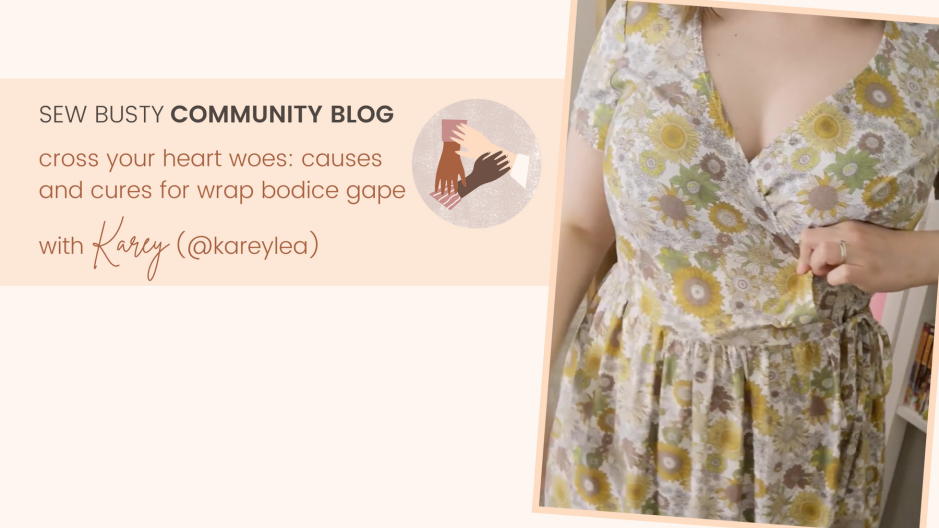
Community Blog | Cross Your Heart Woes: Causes and Cures for Wrap Bodice Gaping with Karey
Editor’s Note: Since we are sewing up Cashmerette Roseclair wrap dress/peplum for the July 2021 sew along, I’ve asked a couple community members who are ahead of the curve to write community posts on their experiences and their tips and tricks. If you’re a beginner and following the Roseclair Sew Along as part of our Beginners’ Sewing Series, I’d bookmark these posts for later use, and stick to making the pattern as-is for now. For all you adventurous or intermediate-to-advanced sewists, yesterday, Christy talked all about getting perfect bust darts, and today, Karey is chatting about curing wrap gape.
Many sewers struggle with getting a good fit on cross-over wrap bodice styles. This post will address the most commonly raised issue of neckline gaping. Because it is raised so often, I Google searched ‘FBA wrap dress’ or ‘gaping wrap dress’ for solutions, but while there are plenty of tutorials, none seem to address why wrap dresses gape, especially after a full bust adjustment (FBA) for larger boobs, and few wrap dress FBA tutorials provide specific advice for fixing neckline gape.
From SewBusty FB group with permission © EE
The wrap dress tutorial on Sew Over It is typical, with instructions for a regular full bust adjustment with no specific adjustment for wrap fronts.
Sure Fit Designs provides some advice for why a wrap crossover style bodice with a “dart width … correct for your body, … would … still gap? The simple answer is because that crossover in on the diagonal or bias of the fabric.”
The Cashmerette tutorial for their Roseclair wrap dress also identifies a risk of the bias edge of the neckline stretching and creating a gaping neckline. Cashmerette recommends staystitching the neckline edge before starting construction in order to avoid this happening. Both Cashmerette and Sure Fit Designs provide instructions for taking a dart out of the center front edge if there is gaping due to the neckline being too long, but don’t explain why that would happen in a bodice drafted for your cup size, or after you have done an FBA.
By Hand London also has a good tutorial on adding a dart from center front to apex and rotating it to bottom dart, it doesn’t explain what causes the gaping.
Figure 3 shows foam half scale boobs (b) that approximate Lily Fong’s examples (a) of standard root – standard projection; wide root – standard projection; and, narrow root high projection. I combined these with Sure Fit Designs free Half Scale Bodice Templates to create the bodice models I have used in this post.

b) The foam domes I found on the right approximate her standard root – standard projection; wide root – standard projection; and, narrow root high projection
Figure 4 shows how the scaffolding of a standard B-cup bodice is like a tent with a ridge pole connecting the two bust apexes, with the side poles sloped down to the waist on one side, and to the neck on the other side of the ridge (a). In contrast, once the breasts are divided by a wrap bodice, you need more like a dome tent structure over each breast, connected to the CF seam in the canyon between the breasts (b).
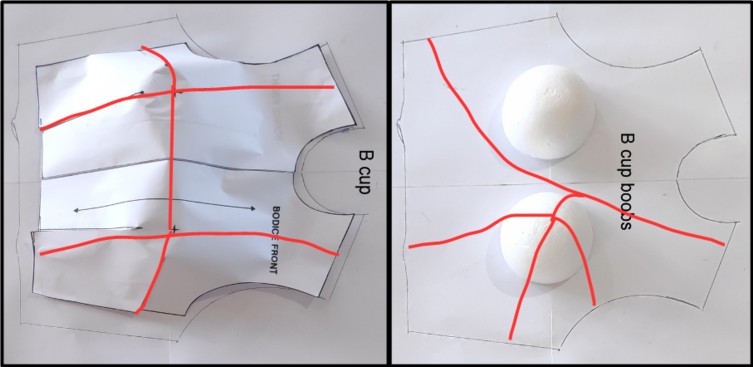
b) Right: Dome scaffolding on B-cup boobs
In order to examine wrap bodices on bigger boobs, I first needed to do FBAs on the half scale B-cup bodice to fit my projected and large, wide boobs.
Figure 5 shows a) left: the B-cup boobs and bodice; b) centre: the projected narrow boobs and Y-dart FBA; and, c) right: the wide large boobs and standard FBA, I constructed with the half scale boobs and bodice template. In Figure 4 b) and c) the Y-dart and standard FBAs have been spread to fit over the projected and wide boobs, but the gaps this creates have not been filled in yet. Note the extra length over the apex ridge poles required to reach the waist on the projected and wide boobs (Figure 4 b) and c), bottom).
Figure 5: a) left: B-cup boobs and bodice; b) centre: projected narrow boobs and Y-dart FBA; c) right: wide large boobs and standard FBA
Figure 6. a) left: projected boobs, regular FBA; b) right: projected boobs Y-dart FBA
I wasn’t intending to do a Y-dart FBA, but when I tried the standard FBA on projected boobs, I got armhole gaping. I had previously read the Curvy Sewing Collective post suggesting the Y-dart FBA as a cure for Honking Great Darts, however Figure 5 shows the result of my experiment, which found that the Y-dart (b) solved the arm gaping issue of the standard FBA for high projection boobs (a). Consequently, I then stuck with the Y-dart FBA for all my projected boobs examples.
Once I had bodices for B-cup, projected, and wide boobs, I created wrap fronts by joining a half front to its mirror, drawing a center front seam down the canyon between the boobs, then mirroring this wrap front to create left and right versions.
Figure 7 shows how even B-cups gape at the neckline, if the length of the center front is not reduced with a dart, to convert bodice from ridge pole structure (a) into dome structure (b). The same thing happens with the projected FBA bodice (Figure 8) and the large wide FBA bodice (Figure 9). This demonstrates the requirement to replace ridge pole scaffold on standard bodice, with dome tent structure for wrap bodices.
Figure 7. a) left: B-cup wrap front gape; b) right: adjusted B-cup front no gape
Figure 8. a) left: projected boob wrap front gape; b) right: adjusted projected front – no gape
Figure 9. a) left: wide boob wrap front gape; b) right: adjusted wide boob front – no gape
In order to show more clearly why the wrap bodice needs center front darts I measured the wide boob FBA wrap bodice over the ridge pole and through the canyon (Figure 10). The center front length over the half scale ridge pole was 28cm (11’) (a), while the length through the canyon created by the wrap front was only 26cm (10 ¼“) (b).
These half scale results are proportionate to the measurements I get on my petite height G cup front. When I measure myself from one shoulder, over the ridge pole to my waist under the opposite boob I am 22”. Through the canyon between my boobs I am 20”. This means a standard FBA on a wrap which creates ridge pole bodice, will be up to 2” too long for me on a wrap bodice.
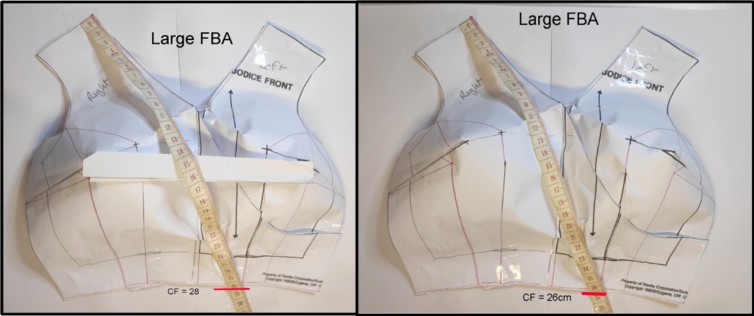
a) left: over ridge pole 28cm (11”)
b) right: through canyon 26cm (10 ¼”)
Try taking these measurements on yourself and see if you get similar results, I’d love to see you post what you found in comments.
Given I found neckline gaping in wrap fronts for all bust shapes, you may be wondering why everyone doesn’t have problems with neckline gape. The main reason is that designers mostly correct their bodices so they don’t gape for the block they are designing for. This means people with B cups will mostly not have gaping problems. The same applies for designers that include cup sizes, they have probably corrected all their sizes to remove gape.
However, the larger your boobs, the more chance your boob shape does not match the block the designer uses, even if they provide cup sizes, increasing the chance of gaping. And if you have to do an FBA on a wrap front, you are adding length (as we saw in Figure 5), almost inevitably creating gaping issues. Removing that length from pattern by folding out a center front dart (or darts) creates the dome structure that wraps the fabric close to the bust.
Figure 11: a) left: B-cup wrap front with waist darts (top) and darts folded out (bottom)
b) left: projected wrap front with waist darts (top) and darts folded out (bottom)
c) left: wrap front for large wide boobs with waist darts (top) and darts folded out (bottom)
Figure 11 shows the center front and low front darts marked, then folded out. You then need mirror front for the other side. As I started with full front on which I did FBA, before I marked cross over center front seamline, my left and right bodices should match. However, when you are adjusting a wrap pattern for a smaller cup size than you need, doing an FBA on the half of the front that goes below the bust is tricky. The Sewing Divas have a helpful tutorial for how to check that side seams of left and right fronts align after you have done an FBA on a wrap bodice.

Karey Harrison is a feminist philosopher of science and linguistics, environmentalist, retired academic, home baker, sewist, gardener. Karey also wrote the guest blogpost: #AllButtsWelcome: Unmentionables: Crotch Variation in Pantie Fitting. You can catch Karey on instagram @kareylea and see Karey’s academic profile here.
Images: unless otherwise noted, images are by Karey Harrison (CC BY-SA 4.0).

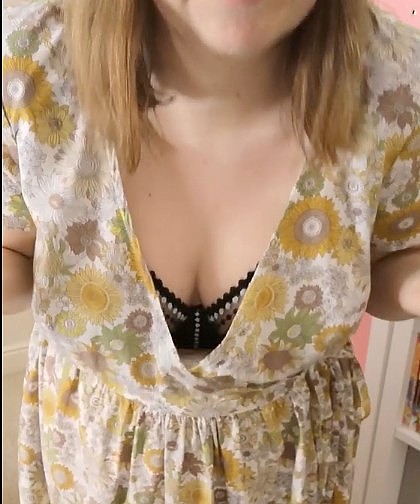
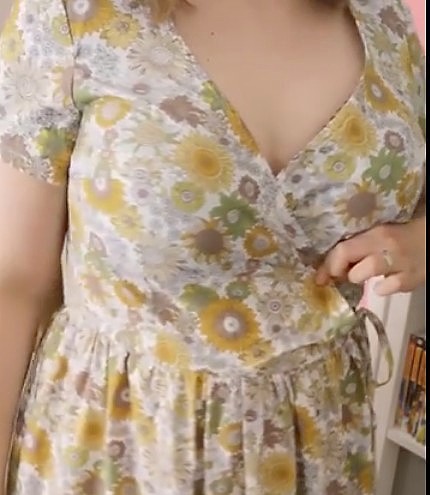
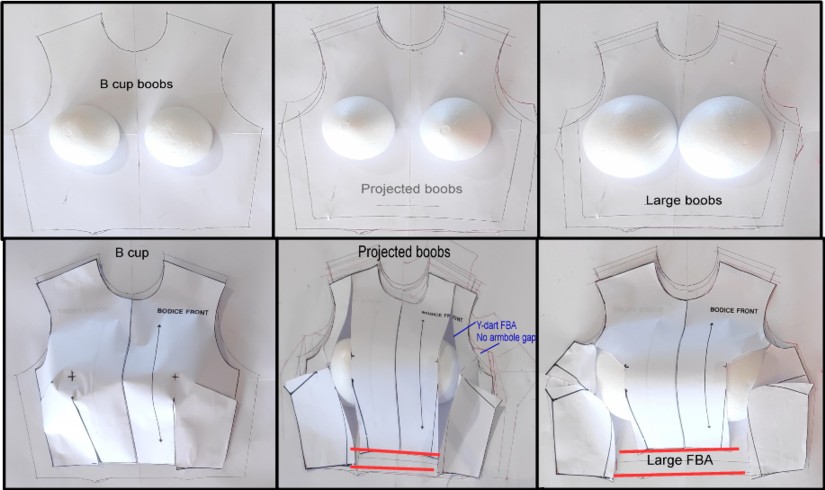
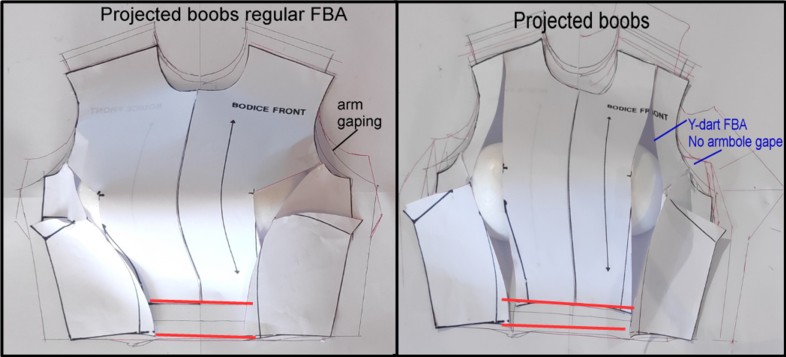
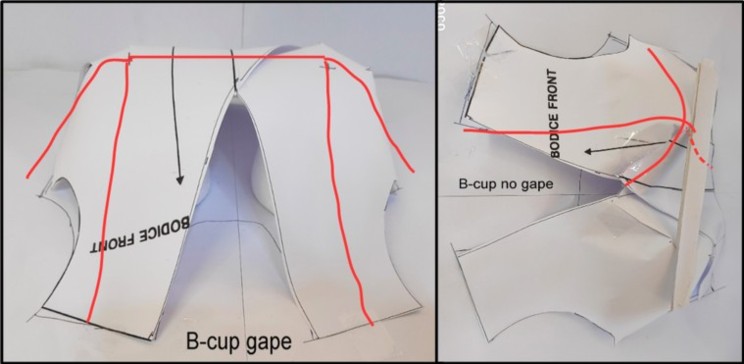
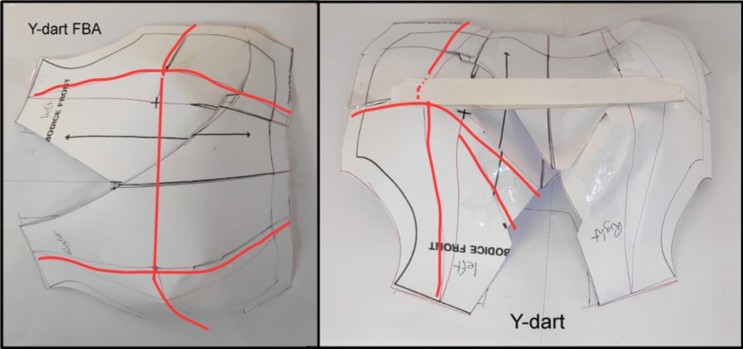
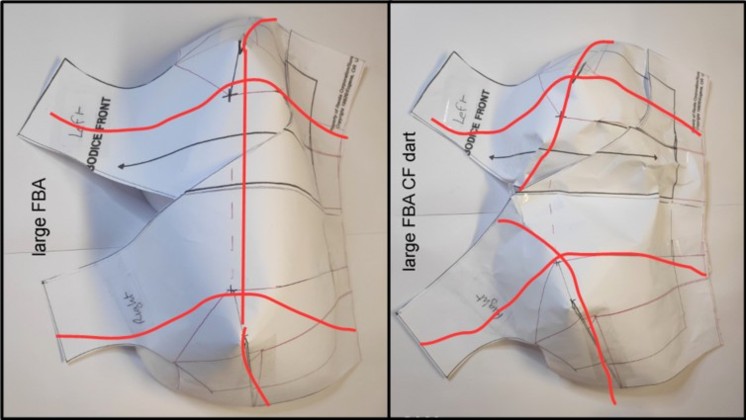
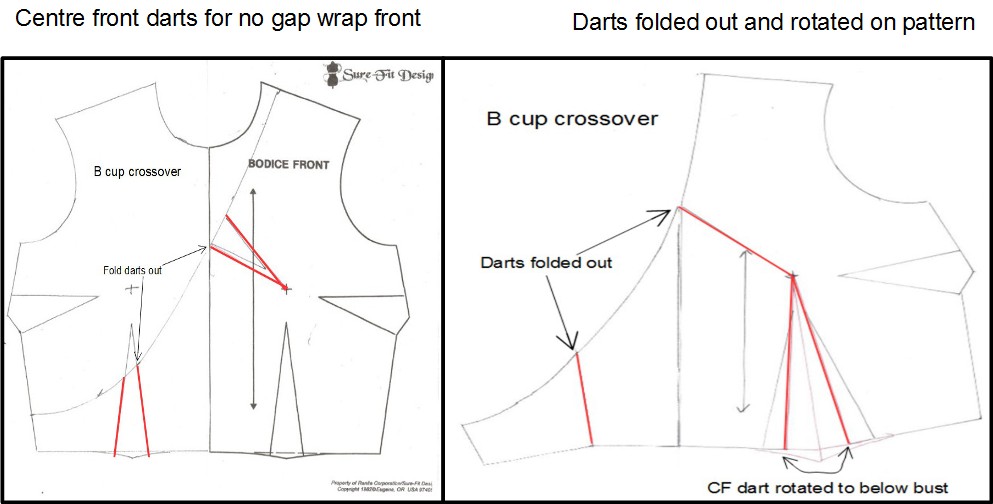
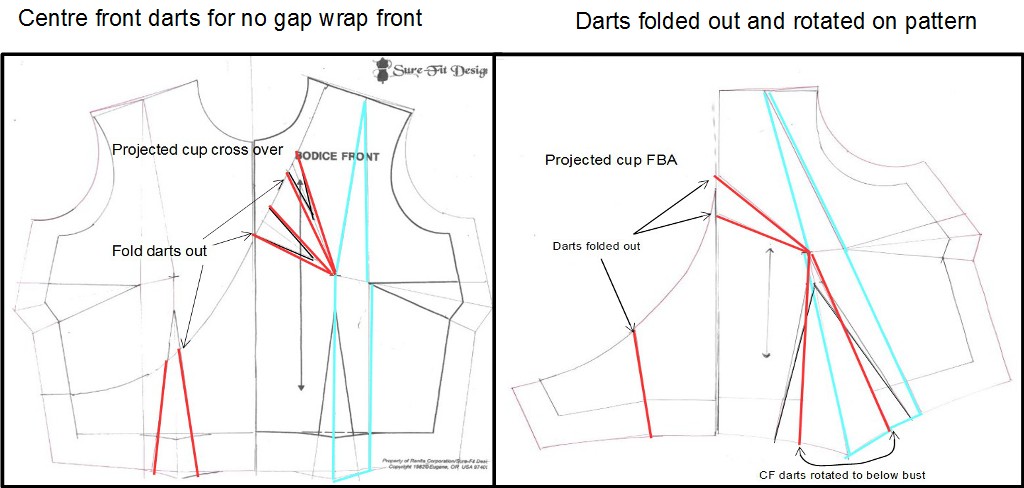
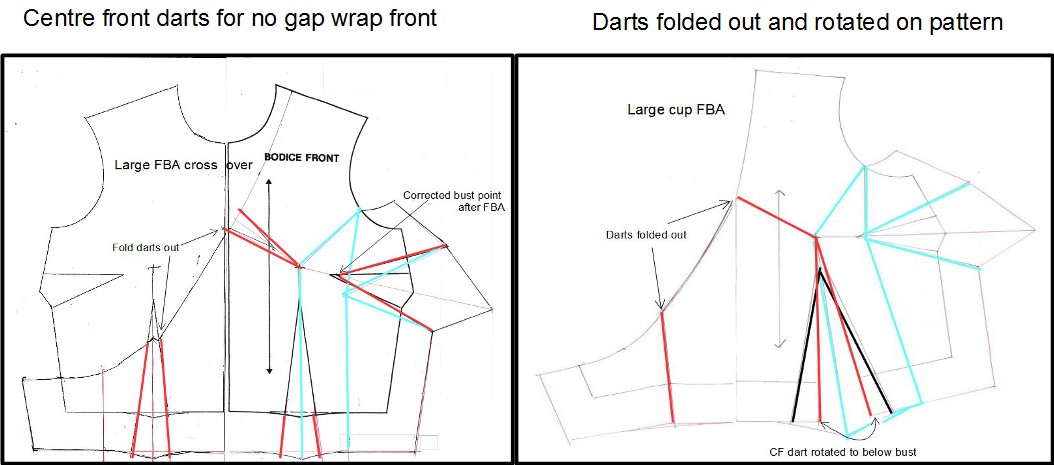
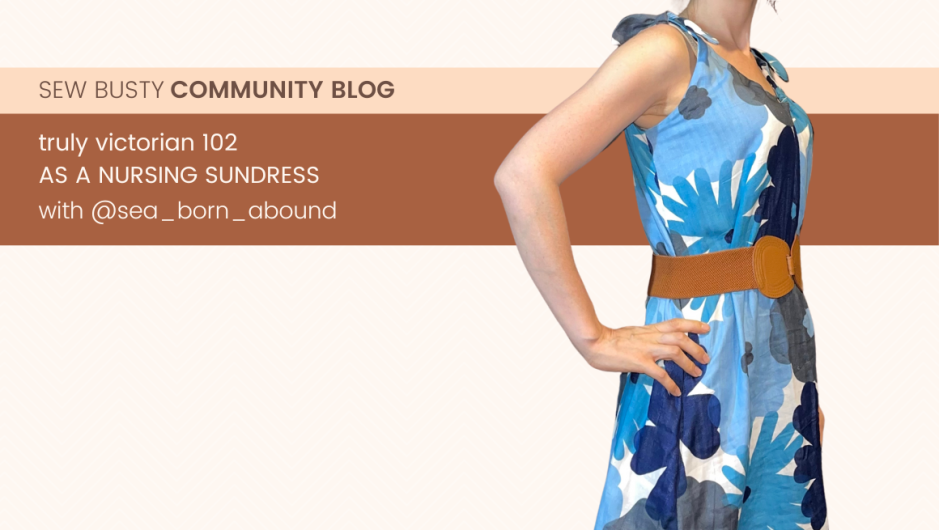
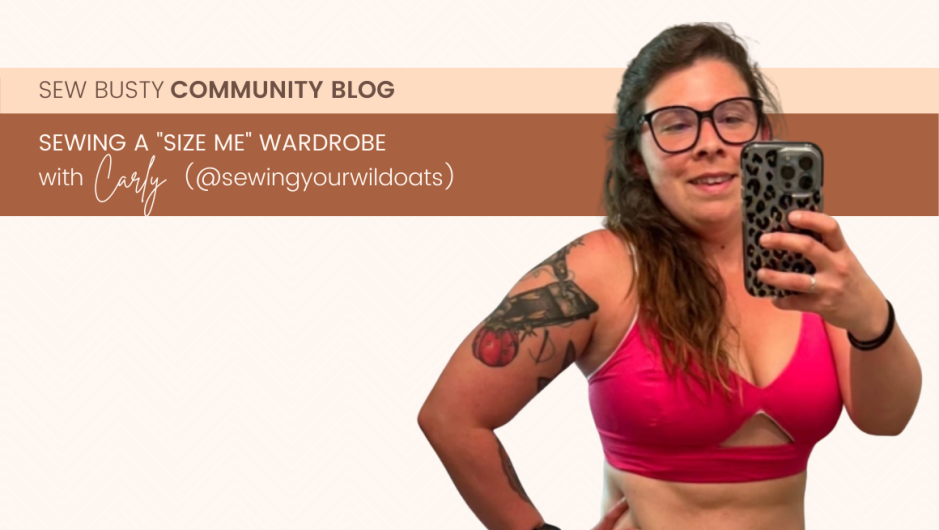
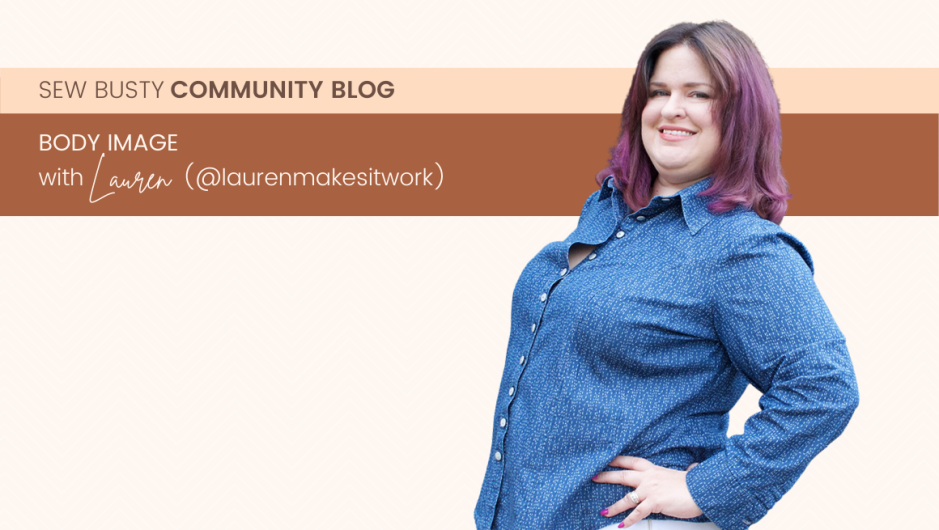
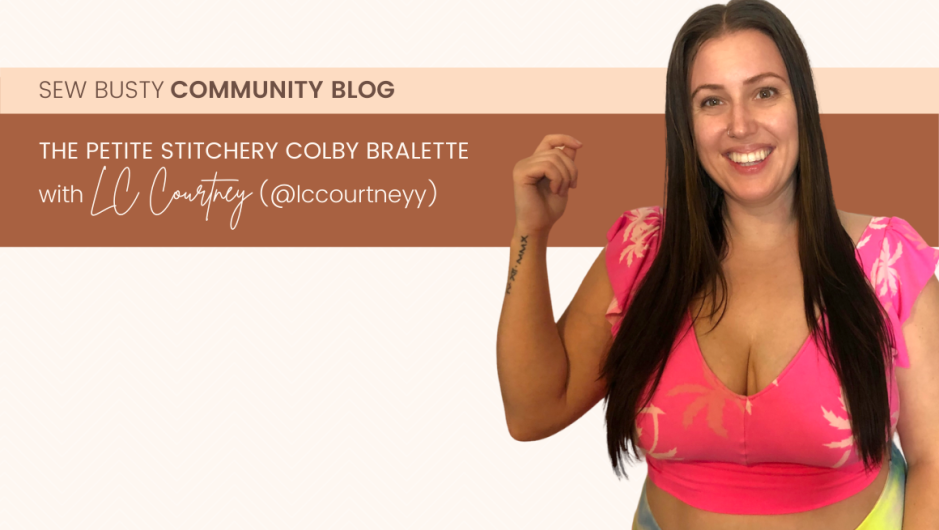
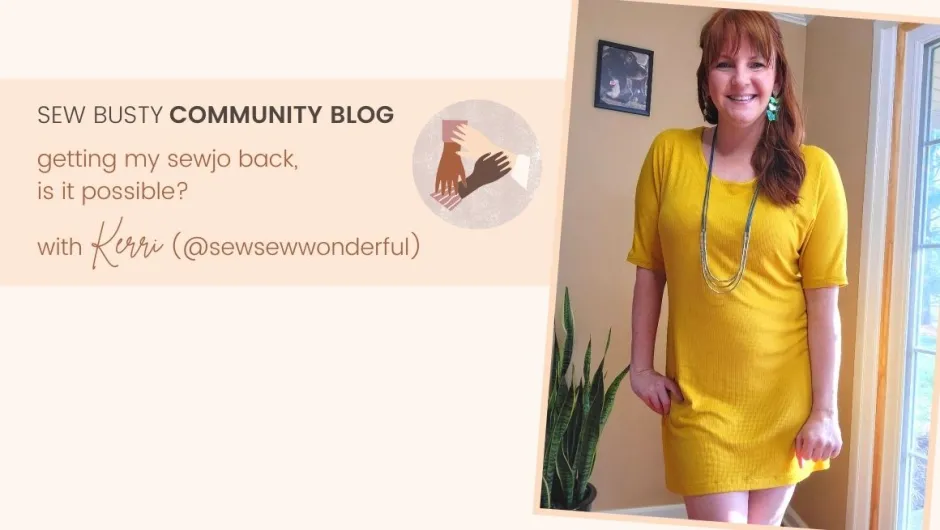
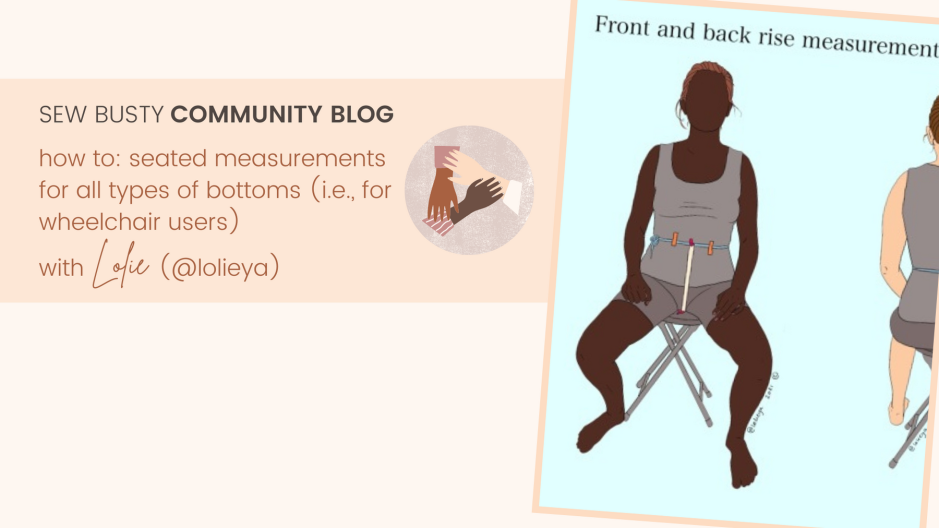
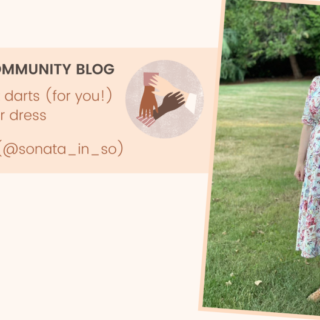
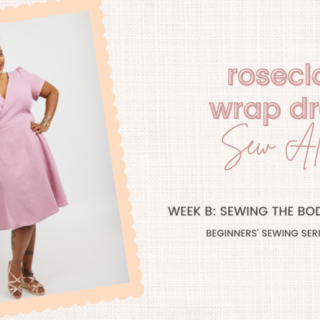
Susan
July 15, 2021Thank you for this great explanation. All I knew before was that wrap front dresses suit me, but when I sewed them, I always ended up with multiple darts/tucks along the diagonal wrap after I did a full bust adjustment. Now I’ll know how to alter the pattern ahead of time.
sewbustycommunity
July 15, 2021Yay! I’m so glad this was helpful for you. <3
Kaia
July 15, 2021Hold on a second. Can we back up to this y-shaped fba for projected breasts? Why had it never occurred to me that projected needed a different fba?
I recently made the Cashmerette wrap dress, and yes, it gapes on me. Plus the wrap wants to be too low and the combination of these things means I need a safety pin for it to be wearable. I figured if it wasn’t workable with that pattern, there was just no hope for me.
What’s the prospect I can just fold an extra dart out of that neckline? Can one retroactively convert a wrap dress pattern (with cup sizes, and no fba needed) to work as the y fba, as is more needed than removing another dart?
sewbustycommunity
July 15, 2021Hahaha! So I will say that, as someone with projected breasts, I don’t personally need a Y dart necessarily. It really depends on your specific shaping, how where your bust is on your body, etc. But it’s certainly a great option for if you’re doing an FBA and still getting underarm gape!
Depending on how your Roseclair looks, you may be able to just fold out a dart at the waist. Where is your Roseclair gaping? Are you on Facebook? If so, I’d strongly recommend posting pictures of your Roseclair so we can give you specific advice!
–Lindsie
Karey
July 15, 2021If you read the Sure Fit Design tutorial, you can also try lifting the shoulder at the neck edge, as well as removing length at CF waist. Although I find these work better as quick fixes on knits. Folding out the dart to the apex changes the shape as well as the length.
Abbey s
October 24, 2021Thank you for this great tutorial. I don’t have the pattern, because wrap dresses gape :). I wonder if an additional way to add further stability at the wrap edge would be have the diagonal cross over edge run along the lengthwise axis. Ie take advantage of the reduced flexibility lengthwise. I know that chiffon tops sometimes use the selvedge or grainline for that edge to prevent bias stretch. Hm, I might have to try that.
Anyhow, great tutorial-thank you writing such in-depth piece. So appreciated. Abbey
Karey
October 24, 2021You more need the diagonal edge to be smaller than over the bust, and the fit over the bust will be better on bias too.
On a nightie I made I took advantage of the neckline bias, by using the iron to shrink the edge, then ironing on interfacing to stabilise it at the shorter length.